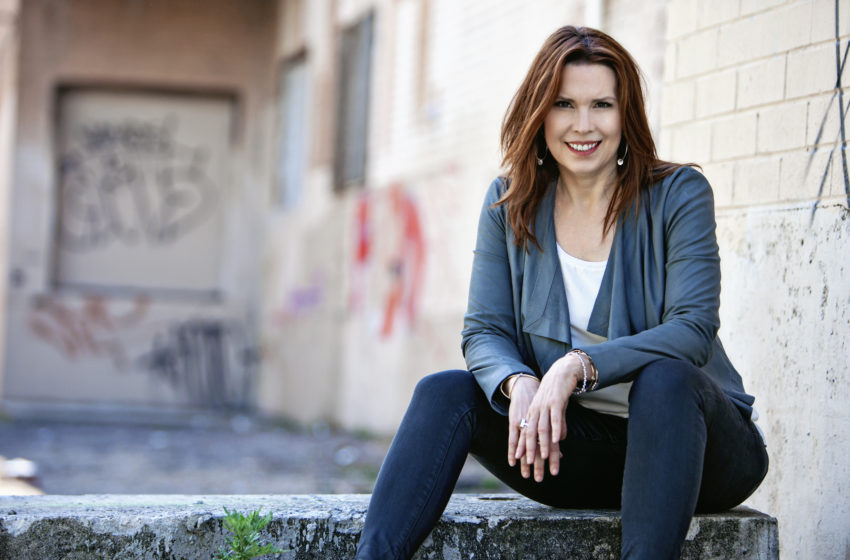How to Hedge Against an Unseen Enemy: A Conversation with Annie Duke

Annie Duke has evolved from professional poker champion to one of the top authorities on decision strategy in the country. Her bestselling book Thinking in Bets is all about making sound decisions in the midst of uncertainty—so she seemed like the perfect person to talk to about the uncertainty that currently reigns in the world due to the current pandemic.
We asked Duke about some of the top questions on leaders’ minds in the age of COVID-19: How do we hedge against the worst outcomes possible without paying too high a cost? And how do we determine how much risk we’re willing to tolerate in the first place?
We have seen a lot of tough decisions being made across the world in the past month or two. What have you been noticing?
These certainly are strange times we’re living in. It’s a good demonstration of decision making and risk, I have to say. The concept of hedging comes up a lot in how we respond as a nation. We’ve had to make difficult decisions about the cost we’re willing to pay for hedges that mitigate risk. Because we didn’t get some early, low-cost hedges in place, we had to make far more costly hedges, like shutting down whole sections of the economy.
We all hedge every single day in all sorts of ways. The simplest example is insurance. We pay for fire insurance, but we also hope to never use it. That creates an interesting dynamic in terms of cognition. Another example is if I want to have my wedding outdoors: I might recognize that the weather could be bad, so I could rent a tent, but I’m still hoping I don’t have to use the tent. We’re willing to pay those extra costs for hedges that de-risk the situation and lower the impact of the downside.
What’s interesting is that there are two kinds of hedging. There are status quo hedges, where everybody’s doing it. This is like the case of fire insurance. If your house doesn’t burn down, you don’t necessarily regret having had the insurance, because it’s an accepted thing to do. But other hedges do have after-effects, where you experience regret. If your wedding day is beautiful and sunny, you feel sad you paid for the tent.
Fear of that regret often makes us not hedge in the first place. If it turns out we didn’t need the hedge, we’re going to feel like an idiot, and other people will think we’re an idiot too. During the last year, if you had a balance of 60 percent stocks, 40 percent bonds in your portfolio, you were probably pretty sad about the bonds portion. Recently, I imagine you’d be pretty happy with that mix. Periods like this are the reason you have these hedges in place.
What hedges would you have put in place during the early days of the pandemic? Do you think we did enough?
If I had been the decision maker, I would have been looking at what was happening in China in the early days. I was actually doing that as a citizen and seeing the exponential transmission. That creates an interesting problem, because when you have exponential transmission with a delay, the world as you see it right now is not the world as it actually is. You have this underlying thing that people can’t necessarily see.
The thing about a hedge, of course, is that you have to get it in place before the tipping point occurs. You need the fire insurance before your house actually catches on fire. It becomes a probabilistic problem. As we watched the course of this virus, even before things got bad in Italy, we could see in China that there was a good possibility of a fire. We couldn’t see the fire here, but we knew there were embers burning, and that we should hedge against those embers catching and burning the house down.
There were a couple of hedges we could have done pretty early on. In January, we could have been ramping up testing. There’s a cost to producing all the testing kits, but in case these embers catch fire, these kits become really important. They would have allowed us to reduce the impact of the downside—we could have done what South Korea did through widespread testing, isolating where the virus is, and cutting it off.
Another hedge we could have put in place was earlier and stronger messaging about social distancing, to lower the rate at which those embers were going to catch. Social distancing is obviously only going to do so much unless, and I wouldn’t have suggested locking people in place in January, but social distancing measures do slow the spread and stop hospitals from getting overwhelmed.
A third hedge would have been to do some kind of emergency powers early in order to increase medical equipment, whether that was through massive 3D printing of ventilator parts or activating the Army Corps of Engineers and building field hospitals. You could see what was starting to happen in China and Italy and say, “Okay, what are we going to run out of? Let’s ramp up production of that stuff.”
Again, you’re hoping that your house doesn’t light on fire and that you have warehouses full of testing kits and extra ventilators and people who did social distancing and didn’t get the virus. That creates the paradox, and I think it’s why we saw people at the beaches during spring break. When it’s something that isn’t status quo, we’re worried about the criticism for having hedged aggressively if the thing that we were trying to prevent doesn’t occur. It’s the result you want, but people have a hard time after the fact not saying, “Why did we do it? We didn’t end up needing it!” When those disastrous things don’t occur, even if it’s partly because you hedged, we tend to look back and say, “We should have known that was a poor decision,” simply because the quality of the decision isn’t particularly settled.
It’s hard to make those initial decisions when you don’t have all the information on transmission rates and death rates. When we compare places where they put in these big measures and places where they didn’t, we need to make sure that we’re comparing apples to apples. Back in the early days, we couldn’t say, “Well, this country only had a 0.6 percent death rate, so that’s what we can expect here,” because that death rate may have been that low, relatively, because of the hedges they put in place.

It’s been difficult to get accurate information on the actual death rate, with lots of disagreement about where it’s likely to end up.
Right. Because early testing rates were so low in many places, the death rate looked artificially high in some reports. But on the other hand, the death rate, the numerator, is always going to lag behind the number of people infected, or the denominator. Because we’re still at the front end of the pandemic, the death rate can also look artificially low. Sadly, we have to wait before we start to get a real idea of what the death rate is, because it’s going to lag behind. And if you can only treat, say, one in 10 people, that’s obviously going to shoot your death rate through the roof.
Figuring out how many lives could be lost in the United States was, and is, difficult. There’s a whole range of scenarios, and we needed to know the probability of each of those scenarios occurring and what we could do to prepare. How can we increase the probability of the good scenarios occurring? How can we decrease the probability of the bad scenarios occurring? If we can’t decrease the probability of the bad scenarios occurring, let’s at least figure out how can we hedge against that.
The most difficult part of determining how to de-risk the situation is figuring out our tolerance in terms of death rate. Once you’ve figured that out, then you can figure out whether the cost of the hedge was worthwhile. We’ve already answered that question for the flu. As a society, we tolerate the death rate of the flu. The flu spreads, but not at a rate that it’s like a fire through dry tinder, and the death rate is pretty low. We don’t do social distancing. We don’t shut anything down. We also tolerate the death rates of non-transmissible illnesses like heart disease. And we’ve all decided on our tolerance for the possibility of getting in a car accident. That’s something we decide every single time we get in a car.
Determining our risk tolerance for something new like COVID-19 is a really hard conversation for anybody to have. You have to say, “Okay, if we’re talking about a transmission rate of between 3 and 4 for a new virus, what is the death rate that we’re willing to tolerate here?” In other words, what are we willing to pay in order to hedge against the really big downside?
And we humans certainly struggle to think rationally about things like that, especially when emotions like fear get involved.
Right. And those are hard conversations in the same way it was hard for people to understand the danger back when we had 15 cases in the US. We tend to think, “15 people in a country of 350 million? That’s nothing.” But you have to first understand that people weren’t getting tested, so the real number was orders of magnitude more than that. And then if you understand exponential growth, you know how it’s going to spread. If it’s going to double every three days, two weeks looks pretty bad now. Three weeks starts to look really scary, and four weeks is terrifying.
Those are all things you can’t see with your own eyes. That’s an obstruction; people have a really hard time thinking probabilistically, so they don’t really get that. It’s hard to think about the rate of growth abstractly, just like it’s hard to think abstractly about what your tolerance in terms of death rate. It’s easier for people to think about grandma getting sick.
And it’s nearly impossible to have that conversation in a political environment.
Exactly. But if you do not understand what your risk tolerance is, how could you possibly figure out what you’d be willing to pay to hedge? If I were a decision maker, I would have had that conversation early on to try to figure that out. It’s a horrible conversation to have, but without it, you can’t make a decision. You want to have those difficult conversations before they become the truly and deeply difficult conversations they had in Italy, about which patients to treat and which to let die.
Given the effects on the US economy, many people will be examining the quality of the decision to shut down so much activity, even if we did save lives, right?
In order to protect the economy, we had to look at the downside risk, which in this case was pretty severe. We had to ask, “What can we do to really reduce the impact? Some of that stuff is really, really bad for business. I wish that back in January we had ramped up the testing kits and been more aggressive about travel bans for people coming into the United States from places where we knew there were cases. Had we gotten those hedges in place fast, we could have blunted some of the economic impact. The downside risk of not spending money on those testing kits was huge, and we got into a situation where America was shutting down.
The hedge on the testing kits was a slam dunk, and obviously that was a mistake. That one’s a very low-cost hedge.
Exactly. Producing the medical equipment is a pretty low-cost hedge as well when you look at the downside economic impact of not having medical care in place. As we know, it could be millions of lost job and trillions of dollars in stimulus. Producing test kits early, ramping up production of medical equipment, activating the Army Corps of Engineers—those are all super-duper low-cost hedges.
Because there are so many unknowns, you always want to start with the lower-cost hedge. You want to put the slam-dunk, no-brainer hedges in place to prevent the costly hedges later.
Absolutely. And the social distancing hedge is about three orders of magnitude higher in cost.
Right. There is a difference between social distancing and locking down, though. Getting the message out really, really early about handwashing, not shaking hands or hugging, using your sleeve when you open doors knob, standing farther apart, not touching your face—those are very low cost and they really slow the spread of transmission. Nothing’s shut down under those kinds of social-distancing measures. We could have put out PSAs and gotten this message out in a really strong way in January to try to avoid “shelter in place” measures.
What do you change going forward so you don’t deal with this bigger problem?
I have great faith in humanity to figure out something that reduces the death rate. And I have great faith in humanity to figure out a vaccine. There’s luck involved as well. Viruses mutate. They can mutate to get worse, but they can also mutate to get better. I’m hoping for some luck to intervene as well because the virus can mutate to something that looks more like a cold. We shouldn’t forget that. Viruses mutate all the time, and we have it in our head that they only mutate for the worse, but they’re as likely to mutate for the better.
If they only mutated for the worse, we’d be gone by now.
That’s exactly right. The other thing I’m hoping is that the virus is vulnerable to heat and humidity. If summer slows it down, that buys us time for a vaccine or treatments that significantly lower the mortality rate. The 1918 flu didn’t wipe out humanity, and this was way before ventilators and an understanding of germs in the first place. That doesn’t make it any better for someone who’s personally affected; all sorts of awful personal experiences have happened and will happen. But humanity as a whole is pretty resilient. We’re going to get through this.
This one seems to spare young people, fortunately, and in sparing young people, you should be able to speed up herd immunity. No matter what happens, this is going to be a defining moment for everyone alive on this planet right now. There isn’t going to be anybody who doesn’t know somebody personally affected by it.
I feel the same way about the economy. The economy is resilient, but it’s going to be horrible in the short term. We can go through history and look at what’s likely to happen in the long term. We recovered form 2008 and the dot-com bubble and so many others. There are cycles to these things. Assuming that the underlying economy was healthy in the first place, there’s a good possibility that you get a pretty big boom after it happens.
Thanks for speaking with us, Annie. Hopefully next time we talk, it’s about how wonderful things are.
I hope so. I’m an optimist overall—pessimistic in the short-term, maybe, but optimistic in the long term.
Follow Annie Duke: @AnnieDuke on Twitter or www.AnnieDuke.com.





